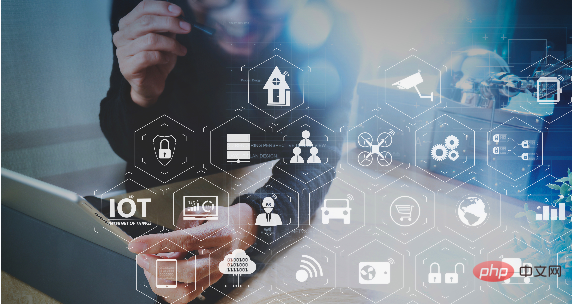Home >Technology peripherals >AI >How to combine IoT and artificial intelligence to optimize water operations?
How to combine IoT and artificial intelligence to optimize water operations?
- 王林forward
- 2023-04-25 19:37:061293browse

Water utility operators around the world face ongoing pressure to operate efficiently, conserve water, reduce environmental impact, and maintain high levels of supply and availability. The adoption of IoT sensors and artificial intelligence (AI) can help the water industry become more resilient and efficient. Many water utilities have begun implementing technologies such as IoT sensors on pumps, valves and meters, as well as geographic information systems (GIS), supervisory control and data acquisition (SCADA) and advanced metering infrastructure (AMI). Each of these technologies helps improve operations, and combining them produces large amounts of real-time data to which operators can apply AI predictive modeling. Let’s take a look at the top five benefits of IoT and AI.
Benefits of the Internet of Things and Artificial Intelligence
1. Demand Forecast
Demand Forecast This can be improved through artificial intelligence, which continuously learns from historical and real-time data from the distribution network. These models reveal usage and supply trends and can leverage other data sources, such as weather or population movements, to provide more accurate forecasts. These forecasts can be used to balance demand and improve planning, including water sources, storage, treatment and desalination plant production.
2. Predictive Corrosion
Water distribution owners and operators need to ensure corrosion is detected early to avoid leaks and supply issues. Artificial intelligence can be applied to pipeline data to detect changes in conditions that would otherwise go undetected. By predicting corrosion early, operators can adjust settings and plan interventions. Key lessons on the causes of corrosion may also be uncovered, which may lead to process improvements in the industry.
3. Predictive blockage
Accurately predicting blockage can avoid water supply interruptions and availability issues. By using data from the entire water network, AI models can identify early indicators of blockage as conditions change. With this information, operators can plan interventions and become proactive rather than reactive. AI can also reveal the enablers and root causes for operators to change their systems.
4. Predictive leaks
As water pipes and other infrastructure age, they are more prone to leaks and other problems, resulting in Water loss and inefficiency. By using IoT sensors to monitor water flow and pressure, utilities can detect potential problems before they become major issues and take steps to repair or replace aging infrastructure. AI can also be used to analyze data from these sensors and identify trends to help utilities predict when and where infrastructure may fail.
5. Predictive maintenance and optimization
Predictive maintenance models can be generated for critical pumps and valves to prevent unplanned downtime and reduce interruptions Minimize. AI can also be used to predict the performance of critical equipment, processes and systems, as well as optimize settings to reduce energy consumption.
Reduce human intervention
The use of IoT can help water companies monitor their systems more effectively and reduce manual inspections. IoT also creates valuable data that can be analyzed by AI. Understanding and predicting trends leading to leaks can help operators manage their infrastructure, ultimately reducing maintenance costs, conserving water and reducing environmental impact.
The above is the detailed content of How to combine IoT and artificial intelligence to optimize water operations?. For more information, please follow other related articles on the PHP Chinese website!
Related articles
See more- Technology trends to watch in 2023
- How Artificial Intelligence is Bringing New Everyday Work to Data Center Teams
- Can artificial intelligence or automation solve the problem of low energy efficiency in buildings?
- OpenAI co-founder interviewed by Huang Renxun: GPT-4's reasoning capabilities have not yet reached expectations
- Microsoft's Bing surpasses Google in search traffic thanks to OpenAI technology

